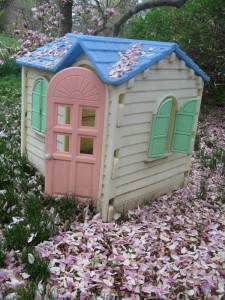REVIEW of Susan Wittig Albert’s forthcoming novel: “A Wilder Rose: Rose Wilder Lane, Laura Ingalls Wilder, and Their Little Houses”
A Little House
In October of this year you’re in for a treat when Susan Wittig Albert’s historical novel “A Wilder Rose: Rose Wilder Lane, Laura Ingalls Wilder, and their Little Houses” hits the stands.
It’s a tour de force. With great skill she marshals an exhaustive store of research into a gripping narrative that compellingly argues that Rose Wilder Lane was an essential creative collaborator of her mother’s famous work. The mother had the story. But it was the daughter’s skill that melded them into solid books, and her business connections that led to publication. Most of all it’s Rose’s professionalism, hard work, discipline and realism that made the books possible.
“A Wilder Rose” is a layered work laid out as an elegant as-told-to story between Rose and one of her protégées. Written in the first person, the novel feels like a memoir. Yet, it is the truth that Tim O’Brian says fiction gets at “when the truth isn’t sufficient for the truth.”
The lines between biography, memoir, creative nonfiction, and fiction has become an important cultural discussion—and one that memoirists seem almost haunted by. One of the larger themes in “A Wilder Rose” is the continuing discussion between Laura and Rose throughout the book of the relationship between fact and fiction. Appropriately, “Wilder Rose” plays this out in its own pages. The accompanying reader’s guide the length of a Master’s thesis provides a research commentary on the content in the novel.
So, what are the layers? First, there’s the literary mystery: “Who wrote the books?” Because the Little House on the Prairie books weren’t part of my childhood, I’m less interested in the particulars of who did what when. It’s the larger issues that draw me in:
- What is the creative process? How are ideas formed into artistic products? How do writers make a living? What’s the difference between the amateur and the professional? What does it mean to each of the women to have their work published?
- In family history lies the richness of family stories. In bringing these stories to light what has to be considered?
- What is the role of the daughter and the mother—both in that historical context and throughout time? When those roles intertwine with the creative tasks of laying out the basic story and then shaping it through careful editing, what must be worked out (doubly).
- Rose was an accomplished writer by her own merits. Yet her mother’s work consumed an enormous amount of time and energy without the rewards of money or public recognition. Why did she do that? In addition to the impressive body of work she did produce, what more might she have produced if she’d been able to focus exclusively on her own work?
Albert also brings us the rich panoply of the world economic and political stage in the late 1920s and 1930s. Her novel raises the role of women in that era, the tensions between country and city, and the changing cultures of the United States and Europe. All these worlds within worlds are brought together on its pages with such grace that we feel as if we’ve been listening to a friend’s story while sipping tea in the kitchen.

